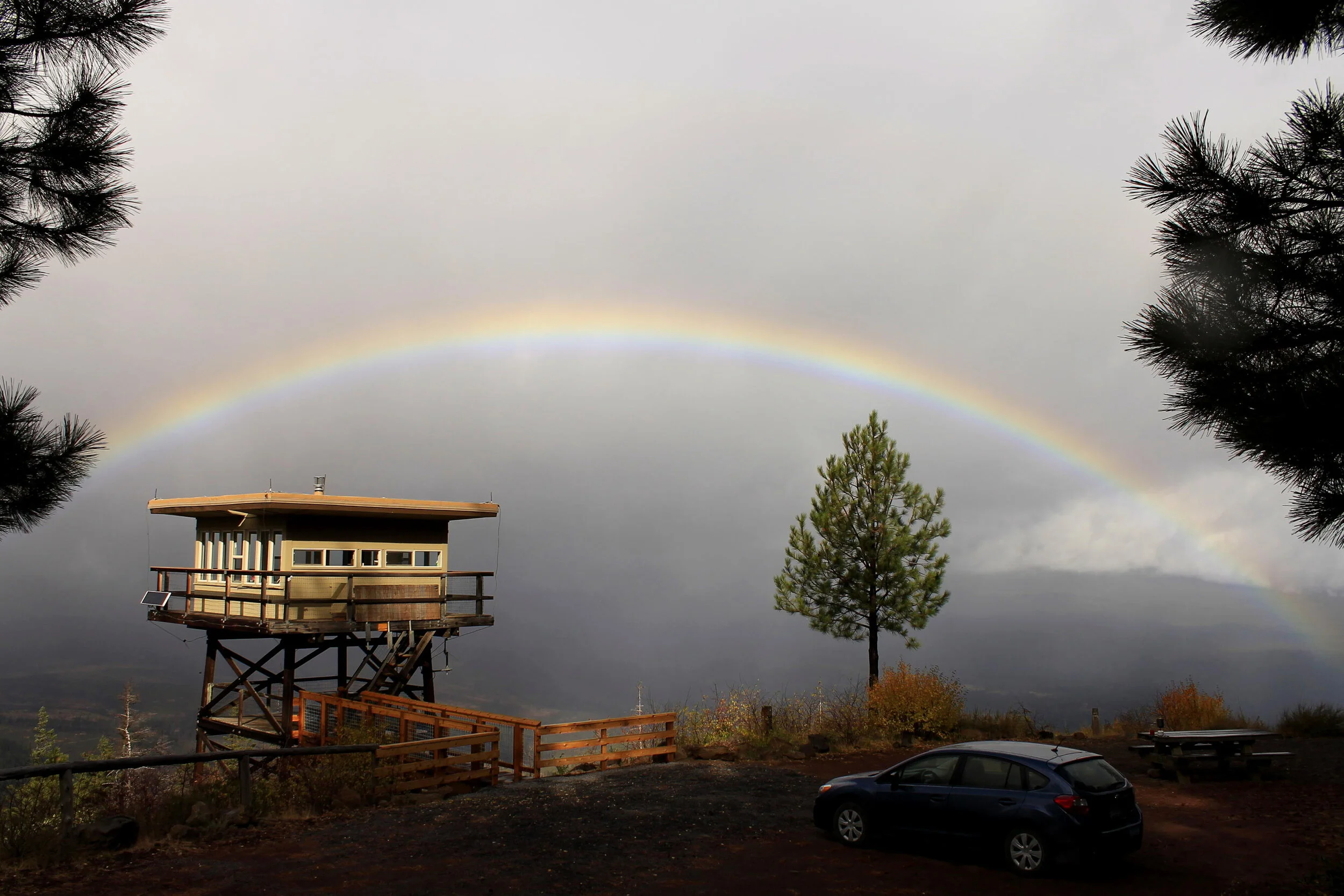Distance: 11.4 miles out and back
Elevation Gain: 600 feet
Trailhead Elevation: 1,247 feet
Trail High Point: 1,312 feet
Season: March - November
Best: April - June, October
Map: Lone Butte (Green Trails #365)
Pass: NW Forest Pass
Drivetime from PDX: 110 minutes
Directions:
• From Portland, drive east on Interstate 84 to Cascade Locks.
• Leave the freeway at exit 44 and follow the off-ramp to the Bridge of the Gods.
• Pay the $2 toll and cross the river.
• On the far side, turn right at a junction with WA 14.
• Drive 5.9 miles, passing through Stevenson along the way, to a junction signed for Carson and the Wind River Road. Turn left here.
• Drive the Wind River Road north for 14.2 miles to a T-Junction. Turn right here to stay on the Wind River Road.
• Continue 12.9 miles of winding road to a junction with the Curly Creek Road on your left, just after the Wind River Road crosses over Old Man Pass.
• Turn left and drive the Curly Creek Road downhill for 5.1 miles to its end at a junction with FR 90, the Lewis River Road. Turn right.
• Drive FR 90 for just 0.9 miles to a junction with FR 9039 on the left. As the road leaves at a very sharp angle, this junction may be difficult to see, so watch your mileage closely.
• Turn sharply to the left here and drive downhill to a bridge over the Lewis River. Cross the river and continue uphill. At 0.9 mile from FR 90, turn left into the Curly Creek Falls Trailhead. The Lewis River Trail begins here.
• Note: You can also drive here via Cougar and around Swift Lake. This approach will take you at least 20 minutes longer, and is much more winding and curvy than the approach described above. Nevertheless, if you’re visiting this area in the winter, this is a safer approach as it stays at a much lower elevation.
Hike: After the Eagle Creek Fire in September 2017, the waterfalls on the Lewis River became the place to be. People flocked to Lower Lewis River Falls the most, bringing their campers, coolers and everything else you would associate more with a day at the beach. Amazingly, the crowds never discovered that the Lewis River Trail downstream of the falls passes through one of the finest groves of ancient forest in the Pacific Northwest. Because there are no waterfalls to be found, this portion of the Lewis River Trail has
remained relatively quiet. Hikers can follow the river upstream to a restored shelter in a riverside flat ideal for camping. Energetic hikers can continue upstream past some of the largest cedar trees you’ll ever see until you reach a campsite at a trail junction. And if you really want to see waterfalls, there are two within a short walk of the trailhead.
Begin at the Curly Creek Trailhead. Follow a wide trail downhill to a junction with the Lewis River Trail. Right will quickly take you to both Curly Creek Falls and Miller Creek Falls, both of which tumble into the Lewis River. Save this short detour for the end of your hike. So turn left and follow the Lewis River Trail upstream a little less than a half-mile to a crossing of FR 9039 beside the bridge. You could park here instead, saving yourself a little bit of hiking, but there isn’t much parking and you miss Curly Creek Falls. Locate the Lewis
River Trail and follow it through the woods along the river. The trail mostly stays to the slopes above the river, but you will have the occasional chance to ramble down to beaches and viewpoints. Along the way you will pass some truly huge trees, both Douglas fir and Western red cedar. At 3.1 miles from the trailhead, you will reach Bolt Camp Shelter. The shelter was first built in 1931 and was eventually restored in 1991. The shelter that stands here now was restored anew in 2013, and appears to be brand new. Hikers looking
for a easy hike or a quick backpacking trip should turn around here.
Bolt Camp Shelter.
Beyond the shelter, the trail passes a huge, park-like flats along the Lewis River. Here the old growth becomes truly stupendous, with eight to ten-foot-thick Douglas firs and Western red cedars reigning supreme over the flats. Your neck may grow sore from looking up. This stretch of trail is even more scenic in the fall, as the undergrowth here is primarily vine maple, which turns many shades of yellow and orange. At 5.6 miles, the Lewis River Trail reaches a junction with the Speed Trail on your right. There is a nice campsite here if you’re backpacking. Ignore the Speed Trail – this path crosses the Lewis River and heads
uphill to FR 90. The crossing is dangerous and not recommended at any point other than late summer. Instead, return the way you came. You can keep going upstream as far as you wish, but unless you’ve arranged a car shuttle, every mile you hike upstream is a mile you have to hike downstream.
If you still have a little energy when you reach the junction near the trailhead, take the time to visit Curly Creek and Miller Creek Falls. Continue past the junction another 100 yards to Curly Creek Falls. The falls is a natural wonder: a 75-foot plunge into the Lewis River through a natural arch. It must be seen to be believed. Continue downstream another 100 yards to Miller Creek Falls, also on a stream emptying into the river; note how the creek divides in two just after the plunge pool. Both streams run extremely low in the summer, but in winter and spring they should be exceptionally scenic. When you’ve finished visiting these falls, return the way you came.
Curly Creek Falls



